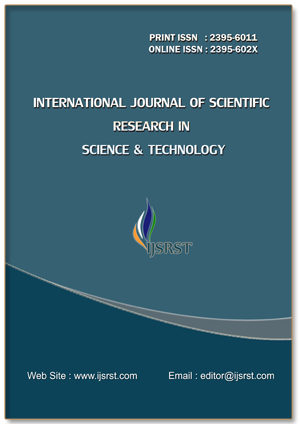Decision Support Systems for Assessing the Teaching Materials Quality in e-Learning and Designing Teaching Materials Management using Learning Style and High Technology Spiritual Communication Methods
DOI:
https://doi.org/10.32628/IJSRST218211Keywords:
DSS, HTSC, SAW, Decision, Teaching, Learning, LecturerAbstract
High Technology Spiritual Communications is a communication system first introduced by a doctor who graduated from Harvard University, Indrawan Hatoguan Siregar, Ph.D., a permanent lecturer at Panca Budi Development University. One of his studies explains how we value other people by understanding their thinking patterns because basically, all humans have four types of thought patterns, and one of them is more dominant. Respect others' mindset, meaning that we also have empathy for them, and communication will also be established and information will be conveyed well and easily understood. In the teaching and learning process, this is very important during the face-to-face learning process and online learning. Students and lecturers do not face each other in online learning but use the internet and LMS (Learning Management System) as the communication media. Implementing HTSC (Hight Technology Spiritual Communications) and Learning Style into lecturer teaching materials packaged as attractive as possible can be a solution in conveying learning objectives to students. Students can understand teaching materials according to their character, mindset and learning style.
References
- B. Widharyanto and H. Binawan, “Learning style and language learning strategies of students from various ethnics in Indonesia,” Cakrawala Pendidik., vol. 39, no. 2, pp. 480–492, 2020, doi: 10.21831/cp.v39i2.28173.
- R. T. Sataloff, M. M. Johns, and K. M. Kost, “No 主観的健康感を中心とした在宅高齢者における 健康関連指標に関する共分散構造分析Title.”
- R. I. Fariani, “Pengukuran Tingkat Kesiapan E-Learning (E-Learning Readiness),” Semin. Nas. Apl. Teknol. Inf., pp. 1–7, 2013.
- R. Herdianto and Y. Bandung, “Roadmap Pengembangan E-Learning Berbasis E-Learning Maturity Model ( eMM ),” e-Indonesian Initiat. 8 April 24th, 2012 Sch. Electr. Eng. Informatics Bandung Inst. Technol., no. April, 2012.
- R. T. Sataloff, M. M. Johns, and K. M. Kost, “No 主観的健康感を中心とした在宅高齢者における 健康関連指標に関する共分散構造分析Title,” vol. 6.
- P. A. Cinquin, P. Guitton, and H. Sauzéon, “Online e-learning and cognitive disabilities: A systematic review,” Comput. Educ., vol. 130, pp. 152–167, 2019, doi: 10.1016/j.compedu.2018.12.004.
- R. Fitrianti, R. B. F. Hakim, S. Si, and M. Si, “Analisis Dan Implementasi Enam Metode Machine Learning Pada Dataset Liver Disorders,” pp. 1–17.
- B. Indonesia, K. Pendidikan, and D. A. N. Kebudayaan, “Proceeding Seminar Nasional Cakrawala Pembelajaran,” no. September, 2012.
- H. Pashler, M. Mcdaniel, D. Rohrer, and R. Bjork, “Concepts and Evidence,” Psychol. Sci., vol. 9, no. 3, pp. 105–119, 2009.
- W. D. Puspitasari and D. K. Ilmi, “Sistem Pendukung Keputusan Pemilihan Dosen Berprestasi Menggunakan Metode Analytical Hierarchy Process (Ahp),” Antivirus J. Ilm. Tek. Inform., vol. 10, no. 2, pp. 18–19, 2016, doi: 10.35457/antivirus.v10i2.163.
- K. P. Tripathi, “Decision Support System Is a Tool for Making Better Decisions in the Organization,” Indian J. Comput. Sci. Eng., vol. 2, no. 1, pp. 112–117, 2011.
- K. Rajalakshmi, S. Chandra Mohan, and S. D. Babu, “Decision Support System in Healthcare Industry,” Int. J. Comput. Appl., vol. 26, no. 9, pp. 42–44, 2011, doi: 10.5120/3129-4310.
- V. Raheja and S. Mahajan, “Decision Support System , Its Components , Model and Types of Managerial Decisions,” Int. J. Innov. Res. Stud., vol. 2, no. 12, pp. 413–418, 2013.
Downloads
Published
Issue
Section
License
Copyright (c) IJSRST

This work is licensed under a Creative Commons Attribution 4.0 International License.

